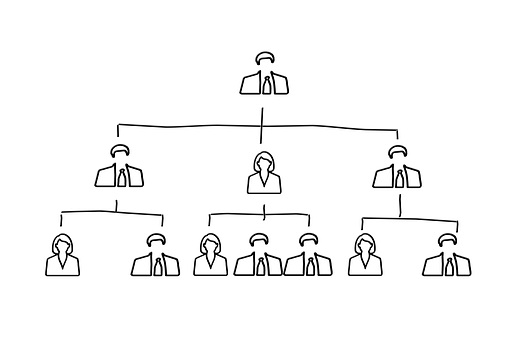The baby boomers are now seniors! This provides a double whammy for health care organizations. First, they will become huge consumers of health care services and challenge the capacity of the system. Secondly, they will be leaving the workforce and their absence will provide additional pressure.
Healthcare organizations will lose many of their most experienced workers at the same time the demand for their services increase!
Who the Boomers are
Baby boomers are those born between 1946 and 1964. After WWII, the good times arrived in the US and birth rates skyrocketed. Baby boomers total about 78 million and are the largest generational bloc significantly dwarfing other groups such as Gen X or Millennials.
Boomers began reaching the age of 65 in 2011. Every day, 10,000 more boomers will hit the age of 65 and this will continue through 2030. Of course reaching retirement age does not mean automatic retirement. A survey conducted in 2019 showed that most Boomers planned on working past their retirement date in numbers greater than previous generations. However, that was soon to change.
Impact of Covid-19
The Covid-19 pandemic greatly impacted the rate at which Boomers were leaving the job market. The Pew Research Center said that Boomer retirements had been consistent at about 2 million annually. However, in 2020 this jumped to 3.2 million.
Not only were the boomers in the high-risk category, but the pandemic also caused many of them to reassess what they wanted in life and change priorities. According to a recent study of 1500 Americans by Coventry Direct, 4 in 5 Boomers would rather retire at 65 and live out their lives in modesty than wait until 75 to retire and live large.
While a small majority (55%) said that they were not interested in a second gig or “encore” career, I would point out that 45% are open to such an arrangement.
Great Retirement and next decade
As an HR professional, here is what is known about the decade ahead of you:
- There will be an increased demand for health care. Baby boomers tend to live longer and experience higher rates of obesity, hypertension, high cholesterol, and diabetes than previous generations. These chronic conditions require expensive treatment and care.
- Boomers will be retiring in large numbers.
- Additional hiring and retention strategies will be needed to not only maintain current levels of service but to support the necessary expansion.
All three issues will require attention from HR and savvy HR professionals are already making plans. I will probably address all of these in the future but in this post I would like discuss the large number of Boomers that are now retiring.
Whether your organization is a large hospital, pharma provider, or a smaller clinic, you currently have Boomers retiring or who will be within the next decade. This will be a loss of many of your most experienced workers.
HR has two concerns– First, what assistance should be provided to loyal employees in this transition and, secondly, how can the effects to be organization be minimized?
Successful Career Retreatment
Organizations spend a lot of time and energy on career advancement planning. Almost every organization includes some type of career planning as part of the annual evaluation process. We encourage participation in education assistance programs, provide CEU opportunities, and emphasize coaching and development by managers.
We literally will map out individual career paths for younger employees or those new to the organization. However, we don’t spend nearly as much attention to the end of that career path. How do we assist the employee when it is time to “wind down” his/her career?
I am suggesting that we need to become just as big on “career retreatment” as we are on career development. Do we have a career retreatment plan that provides maximum benefit to the retiring employee and the organization?
Here are some actions HR should take:
1, Understand where your workforce is in terms of retirement. This is for internal HR use only. HR data can provide you with the ages of your workforce so that you can anticipate the potential impact of retirements. How many? What positions? When?
2, Have a formal career retreatment (retirement planning) program in your organization. Whether you are in a large or small organization, there should be some formalized program for retirement planning. There should be some resources available to the employee to understand the complexities of this transition. Some decisions do not allow for redo’s!
There are issues related to Social Security and Medicare. What is the financial impact of retiring early, at normal retirement age or waiting until 70? Do you have to enroll in Medicare at normal retirement age? What if spouse is retired or anticipating retirement? What about tax issues? Will the employee take early Social Security payments and continue working? Does the employee have significant retirement income streams such as 401(k) or 403(B), investments, income property, etc.?
If I continue working, do I have to take Medicare? Can I be enrolled in both Medicare and my employer health plan? What are the rules? Who pays first?
What are the tax implications of alternative retirement choices? How will my retirement income streams affect my taxes if I keep working?
Think these issues aren’t real or don’t exist? I had always assumed that waiting until 70 was best as it provided the largest payout. However, a retirement specialist pointed out another reality. If an employees was in good health and planned to continue working, it might be best to start Social Security payments at the normal retirement age and invest those monies. If the employee can live off of worked income and invest the SS payments, s/he will come out ahead.
Another example – one employee took early Social Security starting at 62 and continued working. She was floored to discover that her Social Security income was taxable as she had always assumed that it was not taxed. Combined with her worked income, she was faced with a tax liability at the end of the year!
These issues exist and planning will help the employee and the organization. Large organizations can periodically conduct retirement planning presentations for interested staff. it can be a part of annual benefit fairs. Smaller organizations can bring in someone to provide one-on-assistance to individual employees.
These resources are usually provided free by 401(k) or 403(B) administrators. Financial planners will offer counseling/seminar services at no cost. Internally, HR should be prepared to assist with any organizational plans being offered, benefit changes that may be required, etc.
3, Communicate appropriately to workforce. Notice that I said “appropriately”. You do not want to approach an order worker and ask “when are you planning on retiring?”, or “I heard your spouse is retiring so are you doing the same?” You need to be very careful that your actions cannot be described as a form of age discrimination or encouraging the employee to leave.
The advantage of a formal program is that it can be described in employee handbooks, posters, benefit fairs, etc. without targeting any individual employee.. All employees know the resources are there when needed.
Another way is to cover the issue as part of the annual appraisal process. Again, I wouldn’t have the manager ask about retirement plans. However, as part of a development discussion many employees will bring up the fact that they are anticipating retirement within x years.
This can open up a discussion as to whether the employee wants to keep working in another capacity–reduced schedule, contingency, etc.
4, Alter jobs to accommodate senior workers. There are many cases where an employee may want to continue working but in a reduced schedule or with modified duties.
For many people, this may be a financial imperative. Way too many Boomers will be entirely dependent upon Social Security for their income.
Many other professionals would like to continue working in some capacity in order to maintain licensure or certification. Many times I have had retiring RNs who would like to work a reduced schedule in order to maintain their license. Why not continue in their current position?
Let’s face, these 12 hour shifts are grueling for employees of any age. In many cases, experienced RNs simply cannot be “on their feet” for this extended period.
Modifying jobs or offering alternate positions helps the organization. Can you split a 12-hour shift into 6-hour shifts? Can you offer PRN or contingency status? Are there other non-bedside RN positions that they could fill? (Think of your employee health nurse, QA Nurse, Chart Review, etc.)
We focused on nurses, but the same principle would apply to any other position. Be being creative and flexible you can often accommodate the needs of the senior worker and benefit the organization.
5. Offer benefits desired by older employees. We focus on benefits that are of interest to younger employees. Education assistance is an example. Are there benefits that would be of interest to older workers?
Flexible benefit programs that give employees “benefit dollars” to purchase benefits and design an individualized benefit plan are great ways to offer options. For example, if vision is not included in your health coverage, seniors might opt to take that rather than life insurance.
Can your health plan offer a Medicare supplement plan as an option? Depending upon your state, this may be viable.
Convenience benefits are another way to offer services of value to employees. These are services or products offered by outside businesses at no cost to the organization.
One maid service offered house cleaning to hospital employees at a discount. This was popular with senior employees who were continuing to work.
Stay legal
It is critical that you do not open yourself up to any discrimination actions. You want to offer accommodations and services that will be of interest to senior employees, but you do not want to limit or promote these services in a way that is discriminatory or illegal. If necessary, get professional advice.
For example, if you arbitrarily state that some services or accommodations are available to those 60 or older, you may open yourself up to discrimination claims from those 40-59 since they are also in the protected age group.
Safest way is to communicate the availability of what you offer to all employees and base any accommodation upon ability to do the job. Offer options in work schedules and benefits that will be attractive to seniors and let them make their own decisions.





